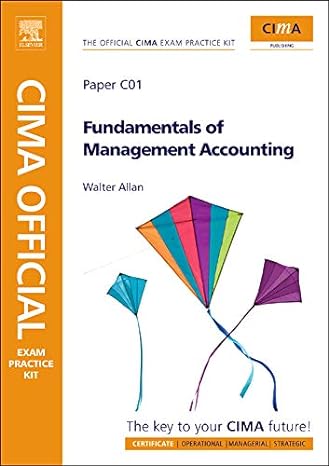Answered step by step
Verified Expert Solution
Question
1 Approved Answer
At December 31, 2021, Vaughn Co. reported the following information on its balance sheet. Accounts receivable $969,400 Less: Allowance for doubtful accounts 81,500 During 2022,
At December 31, 2021, Vaughn Co. reported the following information on its balance sheet. Accounts receivable $969,400 Less: Allowance for doubtful accounts 81,500 During 2022, the company had the following transactions related to receivables. 1. Sales on account $3,665,300 2. Sales returns and allowances 51,300 3. Collections of accounts receivable 2,804,200 4. Write-offs of accounts receivable deemed uncollectible 91,500 5. Recovery of accounts previously written off as uncollectible 28,000 Prepare the journal entries to record each of these five transactions. Assume that no cash discounts were taken on the collections of accounts receivable. (Omit cost of goods sold entries.) (Credit account titles are automatically indented when amount is entered. Do not indent manually.) No Account Titles and Explanation Debit Credit 1. 2. 3. 4. 5. (To reverse account previously written off.) (To record the collection of accounts receivable.) Enter the January 1, 2022, balances in Accounts Receivable and Allowance for Doubtful Accounts, post the entries to the two accounts (use T-accounts), and determine the balances. (Post entries in the order of journal entries presented in the previous part.) Accounts Receivable Allowance for Doubtful Accounts eTextbook and Media List of Accounts Prepare the journal entry to record bad debt expense for 2022, assuming that an aging of accounts receivable indicates that expected uncollectibles are $115,000. (Credit account titles are automatically indented when amount is entered. Do not indent manually.) Account Titles and Explanation eTextbook and Media List of Accounts Debit Credit Compute the accounts receivable turnover and average collection period for 2022. (Round accounts receivable turnover to 2 decimal places, e.g. 25.25 and average collection period to 1 decimal place, e.g. 25.2.) Accounts receivable turnover ratio Average collection period times days
Step by Step Solution
There are 3 Steps involved in it
Step: 1

Get Instant Access to Expert-Tailored Solutions
See step-by-step solutions with expert insights and AI powered tools for academic success
Step: 2

Step: 3

Ace Your Homework with AI
Get the answers you need in no time with our AI-driven, step-by-step assistance
Get Started


